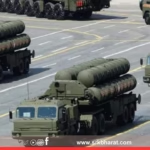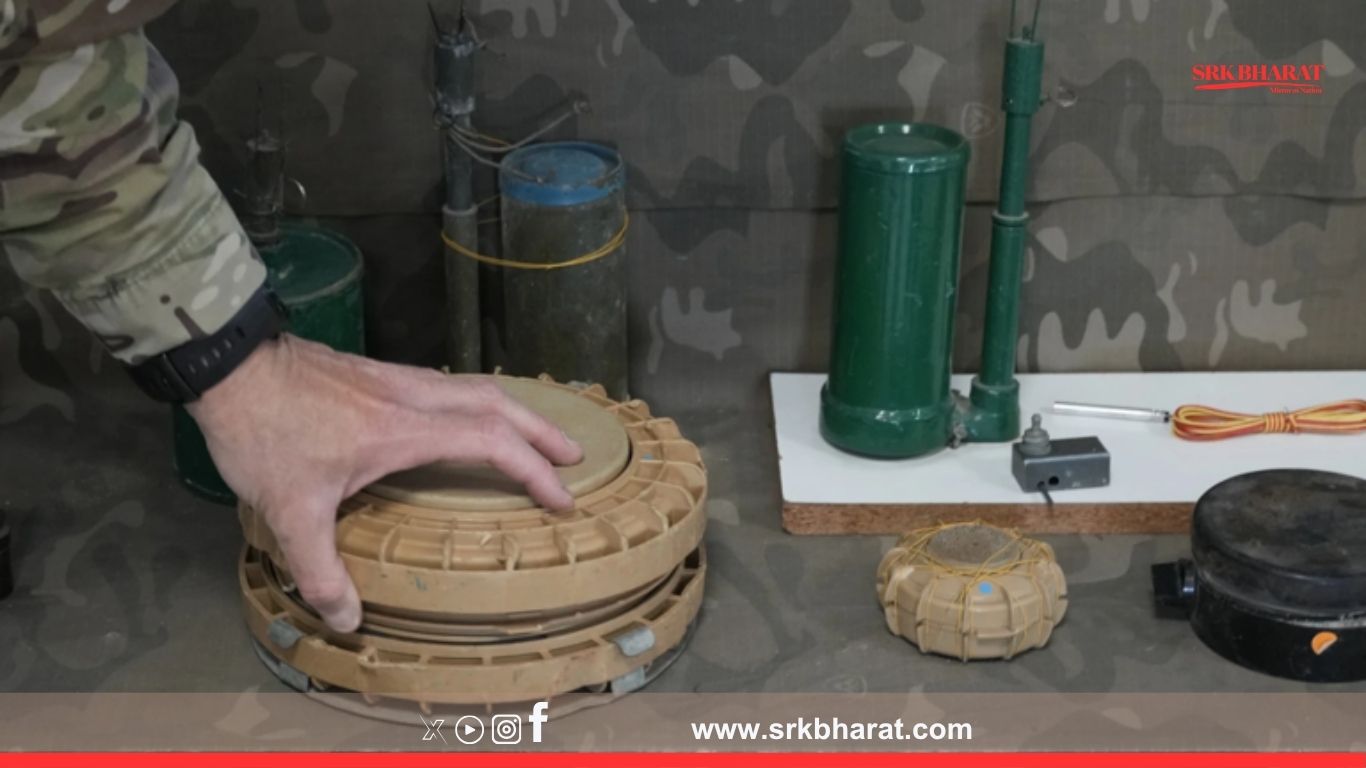In a major shift with global humanitarian and geopolitical ramifications, Ukraine has formally withdrawn from the 1997 Ottawa Treaty banning anti-personnel landmines, citing Russia’s continued use of such weapons and the country’s evolving national security needs amid the ongoing war.
The announcement was made by Ukraine’s Foreign Ministry in Kyiv on Monday night, triggering strong reactions from humanitarian organisations and strategic analysts worldwide.
Key Details of Ukraine’s Withdrawal from Ottawa Treaty
| Parameter | Details |
|---|---|
| Treaty Name | Ottawa Treaty / Mine Ban Treaty |
| Date Signed by Ukraine | February 24, 1999 |
| Date Ratified | December 27, 2005 |
| Date of Withdrawal | June 30, 2025 |
| Reason for Withdrawal | Russian use of landmines, national defence needs |
| Immediate Effect | Suspension of treaty obligations, resumption of landmine deployment allowed |
Ukraine’s Official Statement
In an official release, Ukraine’s Foreign Ministry stated:
“In light of Russia’s continued violations of international law and its extensive use of anti-personnel mines against Ukrainian forces and civilians, Ukraine has no choice but to withdraw from the 1997 Ottawa Treaty to defend its territory and population effectively.”
Ukrainian Defence Minister Oleksii Reznikov reiterated the stance, highlighting that Russian tactics, including indiscriminate landmine deployments, have endangered Ukrainian troops and blocked counter-offensives in Donetsk, Luhansk, and Zaporizhzhia regions.
Background: The Ottawa Treaty
The 1997 Ottawa Treaty, formally known as the Convention on the Prohibition of the Use, Stockpiling, Production and Transfer of Anti-Personnel Mines and on Their Destruction, bans all signatory states from:
- Using anti-personnel mines
- Developing or producing them
- Stockpiling or transferring them
Ukraine ratified the treaty in 2005 and has since participated in multiple demining and humanitarian mine action programs, especially in Donbas post-2014.
Ukraine’s Ottawa Treaty Compliance History
| Year | Key Actions |
|---|---|
| 1999 | Signed the Ottawa Treaty |
| 2005 | Ratified the Treaty |
| 2011 | Completed destruction of stockpiled PFM-1 mines under treaty obligations |
| 2014 | Russia’s Crimea annexation; landmine deployment by Russian-backed separatists reported |
| 2022 | Full-scale Russian invasion; landmine usage by Russia escalated |
| 2025 | Formal withdrawal citing security threats |
Strategic Context: Russia’s Landmine Usage
According to Human Rights Watch and UN reports, Russia has extensively used banned anti-personnel mines such as:
- POM-3 scatterable mines
- PFM-1 “butterfly” mines (particularly in Kharkiv and Donetsk oblasts)
- Tripwire mines around occupied trenches and fortifications
These mines have led to over 2,000 civilian casualties since February 2022, per Ukraine’s Defence Ministry estimates.
Ukraine’s Military Rationale
Defence analysts note that Ukraine’s withdrawal from the treaty will allow its forces to deploy defensive minefields, particularly in the east and south, to:
- Slow advancing Russian armour and infantry
- Protect key urban and strategic defence lines
- Create layered barriers to stall Russian tactical breakthroughs
Colonel Petro Kovalenko, senior Ukrainian ground forces officer, explained:
“Russia has laid tens of thousands of mines on Ukrainian soil without accountability. To protect our troops, fortifications, and civilians from occupation, we require reciprocal defensive capabilities.”
Humanitarian Concerns and International Reactions
The decision has triggered sharp criticism from humanitarian organisations:
International Campaign to Ban Landmines (ICBL)
“Ukraine’s withdrawal is a serious setback for global demining efforts. While Russia’s violations are undeniable, returning to landmine use risks devastating civilian harm now and for decades.”
UN Mine Action Service (UNMAS)
“We urge Ukraine to reconsider and focus on alternative defensive technologies. Landmine contamination causes intergenerational civilian suffering.”
United States State Department
The US, not a party to the Ottawa Treaty, issued a neutral statement:
“We recognise Ukraine’s security imperatives but call on all parties to minimise harm to civilians and abide by international humanitarian law.”
Russia’s Reaction
Russian Foreign Ministry spokesperson Maria Zakharova labelled the decision “hypocritical”, accusing Ukraine of preparing “massive mined fortifications” in civilian areas, a claim denied by Kyiv.
Global Landmine Treaty Status (As of July 2025)
| Country | Treaty Status | Notes |
|---|---|---|
| United States | Not a signatory | Follows internal policy restricting use |
| Russia | Not a signatory | Extensive mine usage in Ukraine, Syria |
| China | Not a signatory | Maintains large stockpiles |
| India | Not a signatory | Defensive mines on borders with Pakistan |
| Ukraine | Withdrawn (2025) | Cited Russian violations |
| Most EU nations | Signatories | Full compliance and stockpile destruction |
Domestic Political Reactions in Ukraine
The decision has garnered cross-party support within Ukraine’s Verkhovna Rada as the war enters its fourth year:
- Proponents: Argue it is a necessary tactical shift to defend sovereignty and protect front-line troops.
- Critics: Warn of future civilian casualties, difficult post-war clearance operations, and moral costs.
Opposition MP Inna Sovsun cautioned:
“Landmines will remain in our soil long after the war ends. We must plan extensive demining to avoid long-term tragedies.”
Economic Impact: Demining Costs
Ukraine already ranks among the world’s most landmine-contaminated countries, with the UN estimating $40 billion in demining costs over the next decade. Additional mine deployments will raise future clearance expenditures, posing challenges for reconstruction and safe agricultural revival in liberated areas.
Estimated Future Demining Needs in Ukraine
| Region | Area Contaminated (sq km) | Estimated Clearance Cost ($ million) |
|---|---|---|
| Donetsk | 4,500 | 8,000 |
| Luhansk | 3,800 | 6,500 |
| Kharkiv | 2,200 | 3,200 |
| Zaporizhzhia | 1,700 | 2,700 |
| Kherson | 1,100 | 1,600 |
| Total | 13,300 | 22,000 |
(Source: UNMAS and Ukraine State Emergency Service 2025 estimates)
Key Takeaways
- Ukraine has formally withdrawn from the 1997 Ottawa Treaty banning landmines, citing Russia’s continued usage and its own national security needs.
- The move allows Ukraine to deploy anti-personnel mines for defensive fortifications in eastern and southern war zones.
- Humanitarian organisations warn of long-term civilian risks and clearance challenges due to expanded mine contamination.
- Russia, not a treaty signatory, continues extensive mine usage without restrictions, increasing battlefield risks.
- Post-war Ukraine will face a massive demining and rehabilitation burden, requiring billions in international aid for clearance, prosthetics, and survivor rehabilitation programs.
What’s Next?
Ukraine’s Defence Ministry will begin procurement and deployment planning for anti-personnel mines, while international demining NGOs prepare revised risk maps for humanitarian operations.
Upcoming UN Security Council and Geneva Convention special sessions in July 2025 will likely address the global implications of Ukraine’s withdrawal and wider mine contamination trends amid continuing conflicts in Europe, the Middle East, and Africa.
Disclaimer
This article is for editorial and informational purposes only. Data are based on official government releases, UN reports, and humanitarian NGO estimates. Readers are advised to consult the Ottawa Treaty depository and national defence updates for formal policy documents.











